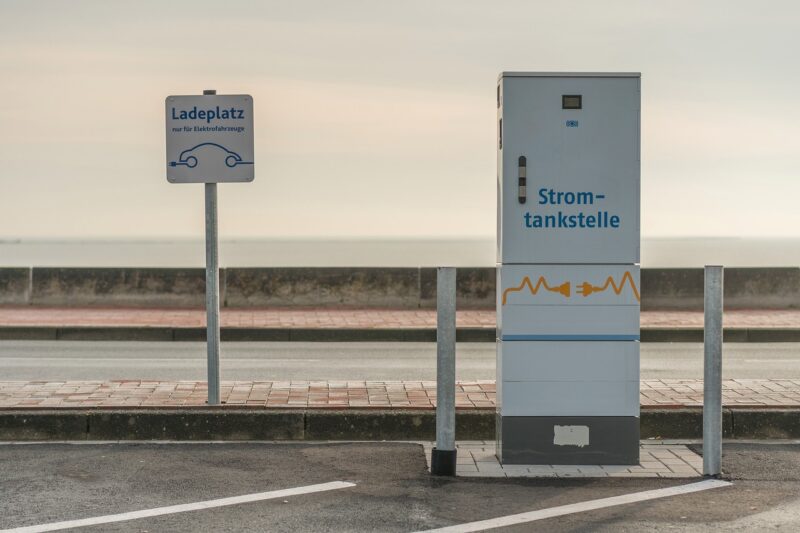The Future of EV Charging: How Fast Charging Is Making EVs More Practical
November 12, 2024

Electric vehicles (EVs) have surged in popularity over the past decade, fueled by advancements in technology, growing environmental awareness, and governmental regulations aimed at reducing carbon emissions. However, one essential aspect that has historically hindered mass adoption is the time it takes to charge these vehicles. Enter fast-charging technology – a game-changer that is reshaping how we think about EV convenience and practicality.
1. Understanding EV Charging Types
Before diving into the impact of fast charging, it’s important to understand the different types of EV charging available today. Charging stations are generally categorized into three primary levels:
- Level 1 Charging: This is the most basic form of charging that uses standard 120 V outlets, typically found in homes. Level 1 is the slowest charging option, often taking up to 20 hours to fully charge an EV from empty.
- Level 2 Charging: These are commonly found in public charging stations and require a 240 V outlet. Level 2 charging is significantly faster, providing about 10 to 20 miles of range per hour depending on the vehicle type. This makes it ideal for overnight charging or public locations where vehicles may be parked for extended periods.
- DC Fast Charging (Level 3): This is the focus of our discussion, capable of delivering rapid charging using direct current (DC). Fast chargers can charge an EV from 10% to 80% in as little as 30 minutes, revolutionizing the charging landscape for both urban environments and long-distance travel.
As EV technology continues to advance, DC fast charging is becoming an essential infrastructure component that addresses the concerns around charging time and range anxiety.
2. Advantages of Fast Charging Technology
Fast charging offers numerous benefits that make electric vehicles more practical and accessible for everyday users. Here are some key advantages:
- Reduced Charging Time: Speed is the most significant advantage. With fast charging, drivers can recharge their vehicles in less time than it takes to grab a coffee or refuel a traditional gas vehicle. This minimizes downtime significantly, allowing for longer periods of travel without lengthy breaks.
- Increased Range Confidence: Fast chargers reduce range anxiety. With an expanding network of DC fast chargers, drivers can embark on road trips knowing they have the option to quickly recharge.
According to the Department of Energy, over 80% of DC fast chargers are located within a mile of major highways, making them ideal for long-distance journeys. - Economic Viability: As fast-charging units become more widespread, the convenience can influence the EV market positively. With a robust fast-charging network, potential buyers may feel more inclined to invest in an electric vehicle, boosting overall sales and shifting the automotive industry toward greener technologies.
- Improved Charging Infrastructure: The installation of fast chargers promotes a more comprehensive charging ecosystem. Many providers are partnering with businesses to install fast chargers at retail locations, restaurants, and even workplaces, enhancing the convenience for EV users.
3. The Expansion of Fast Charging Networks
The growth of fast charging infrastructure is critical for the future of electric mobility. Major players in the industry, such as Tesla, Electrify America, and ChargePoint, are investing heavily in expanding the fast-charging network across urban and rural regions.
- In the United States, the Biden administration has pledged to invest $7.5 billion in building a national EV charging network as part of their infrastructure plan, indicating a strong commitment to promote electric vehicle adoption.
- Globally, various initiatives are underway to create a seamless charging experience across borders, ensuring that drivers can easily locate and utilize charging stations regardless of their location.
- Interoperability among different charging networks is another trending development, allowing EV users to access a wide array of charging stations using a single payment method or subscription plan.
As networks expand and interoperability improves, fast charging is making it easier than ever for consumers to adopt electric vehicles.
4. Overcoming Challenges and Addressing Concerns
Despite its many advantages, fast charging technology faces several challenges that need addressing:
- Grid Demand: The growing number of fast charging stations increases pressure on local power grids. While renewable energy sources can help mitigate this, it raises concerns about the sustainability of rapid charging options, especially in peak demand periods.
- Charging Costs: Fast charging can be more expensive than Level 1 and Level 2 options due to higher electricity rates. Consumers may hesitate to rely on fast-charging stations if costs remain significantly higher.
- Equipment Compatibility: Not all EVs support the same fast-charging standards, leading to compatibility issues. Efforts to standardize charging connectors and protocols across manufacturers are crucial for creating a seamless charging experience.
Addressing these concerns will be essential for creating a sustainable and efficient EV ecosystem that consumers can fully embrace.
5. The Future of Fast Charging: Innovations and Trends
The future of fast charging technology looks promising, with advancements that could further enhance the EV charging experience:
- Ultra-Fast Charging: Manufacturers are developing ultra-fast charging solutions capable of delivering charging speeds upwards of 350 kW. This could potentially reduce vehicle charging times to as little as 15 minutes, propelling the practicality of electric vehicles to new heights.
- Vehicle-to-Grid Technology (V2G): This concept allows EVs to return energy to the grid during peak periods while charging at off-peak hours, providing benefits to both consumers and utility companies.
- Smart Charging Solutions: Technologies like smart grid systems will allow for dynamic pricing and grid management, optimizing charging times and costs based on real-time demand and energy availability.
- Solar-Powered Charging Stations: The integration of renewable energy sources into charging infrastructure can provide sustainable solutions and reduce loading pressure on the grid.
These ongoing innovations will undoubtedly shape the future of EV charging, making electric vehicles more convenient, sustainable, and appealing to consumers worldwide.
Conclusion
Fast charging is a cornerstone technology enabling the mainstream adoption of electric vehicles. As development continues in fast charging networks, curing infrastructure issues, and innovating with new technologies, consumers can expect more independent and convenient EV experiences that mitigate the long-established barriers of charging time and availability. The future of EV charging promises to redefine mobility, showing that electric vehicles can be practical in our daily lives. With strong governmental support and rapid advancements in technology, the transition to electric mobility looks set to accelerate like never before.





